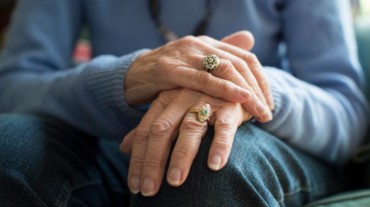
On World Parkinson’s Day 2022, let us break the myth that it is a disease that only comes with age. Even younger people can end up being hit by Parkinson’s or Parkinsonism, a neurodegenerative disorder (disorder causing shrinking) caused by degeneration of a part of the brain called basal ganglia.
Yes, this disease usually affects people of the older age group. But a subset of patients belongs to the younger age group. Young onset Parkinson’s disease affects people younger than 50 years. There is a subset of patients called Juvenile Parkinsonism. It usually presents before the age of 21 years. This is usually related to genetic mutations.

Parkinsonism is characterized by tremors, rigidity (stiffness of the limbs), bradykinesia (slowness) and postural instability (impaired balance and coordination). Over time, it will affect their facial expressions, leading to a mask-like face. Patients will have trouble smiling, swallowing, speaking. It affects their handwriting, leading to micrographia (handwriting becoming small).
The incidence of parkinsonism is 0.5 per 100000 in the <40 age group whereas it is 13.4 per 100000 in the overall age group.
Certain genetic mutations lead to parkinsonism in the younger age group. This could be mutations in gene called as PARK, Synuclein, PINK1, LRRK2.
* Parkinsonism symptoms may be seen post encephalitis (brain fever) called as post encephalitis parkinsonism.
* Toddlers unable to walk resembling cerebral palsy with some parkinsonian features could be having Dopa responsive dystonia.
* An inherited disorder that causes too much copper to accumulate in the organs is called Wilson’s disease; can present as Parkinsonism.
There are various other neurodegenerative disorders too which can present as parkinsonism like Machado Joseph disease, Huntington’s disease.

People with young onset Parkinsonism have a family history of parkinsonism.
They may show slower progression of symptoms, and more side effects from dopaminergic medicines. They can also have more frequent dystonias – twisting or abnormal posturing of limbs.
Younger patients with Parkinsonism may be at various stages of their career, unlike older patients. They may not have enough time to fend for themselves. They could also be in the child-bearing age group and would want to plan their pregnancies and would also require genetic counselling.
Younger braises have neuronal plasticity and have ability to mould and handle disease differently compared to older counterparts. One specific issue with younger patients is the influence of menstruation on the clinical status. Female patients often complain of worsening symptoms and reduced response to medications like levodopa. This needs to be managed appropriately. There is tendency for the symptoms to worsen during pregnancy, however ability to do day-to-day activities remain unaffected.
Select Topics of your interest and let us customize your feed.
PERSONALISE NOWThere is no increased incidence of congenital defects associated with anti-Parkinson medications. Job related-demands of young Parkinson’s patients require special consideration. Young Parkinson patients not only have difficulties in their work sphere, they also are anxious of being discriminated against. Aggressive treatment may lead to long-term complications like difficult to control dyskinesia. Hence, it is essential to discuss with the patient pros and cons of any therapeutic interventions.
Also Read: 5 early signs of Parkinson’s disease you must look out for in your parents

Younger patients respond to Levodopa (combination of the two medications carbidopa and levodopa) differently compared to older patients. These patients have severe dyskinesia. Also, the duration of action of levodopa is shorter. The degree of improvement with levodopa is quantitatively and qualitatively greater compared to older patients.
Younger patients need a cautious approach to introduce levodopa. Dopamine agonists like Ropinirole or Pramipexole or Amantidine are preferred as it reduces Levodopa related complications like dyskinesia or motor fluctuations in the future.
If Levodopa is started, indeed it is better to start at the lowest possible, dose. Patients also require psychological counselling, referral to social support groups. The aim of treatment is to preserve active social and occupational life of patients and try to reduce incidence of expected complications like dyskinesia.